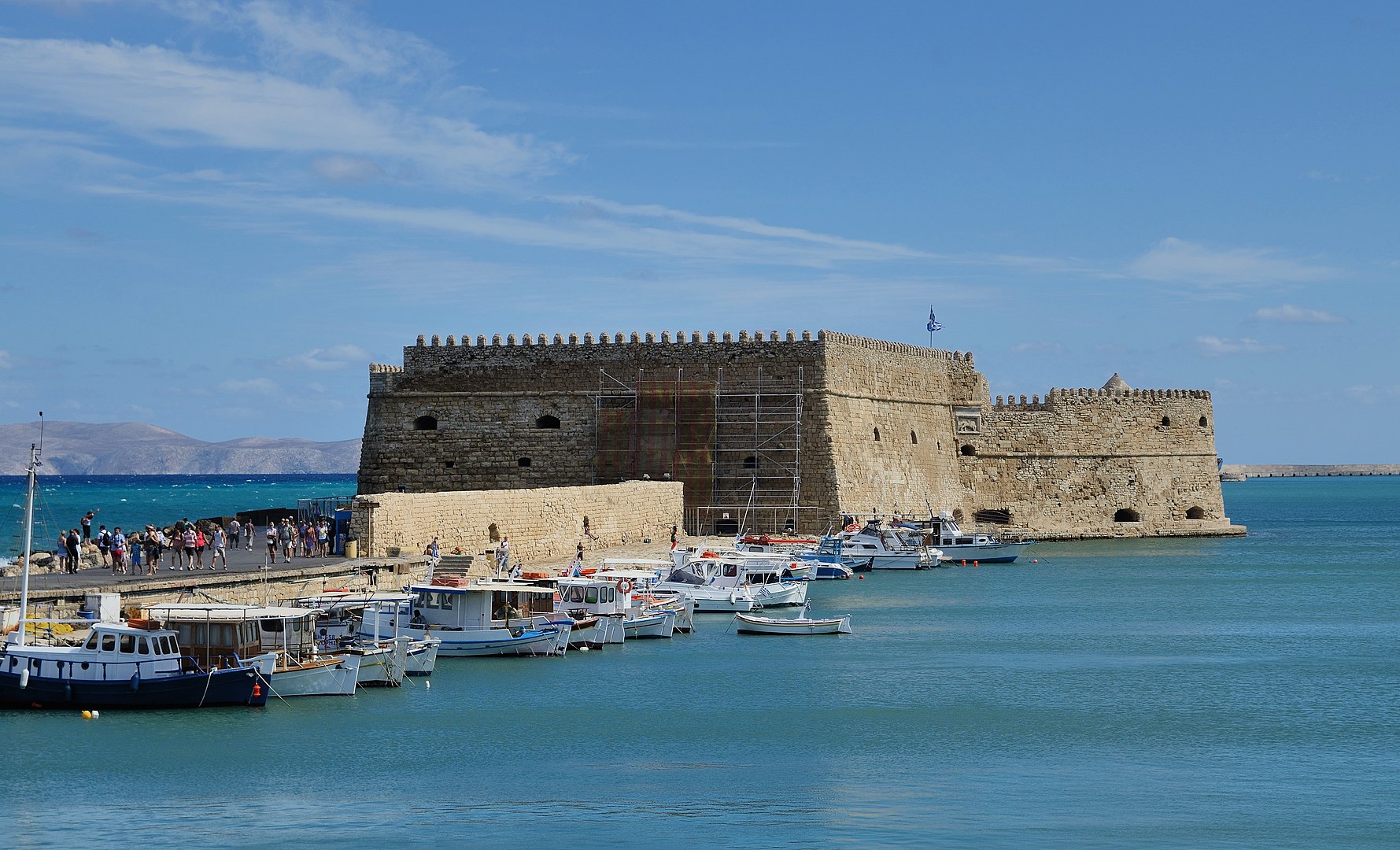
Greece abounds in blockbuster sights, and Heraklion, the sprawling capital of its largest island, Crete, is gateway to two of them: the Heraklion Archaeological Museum, with its unparalleled collection of ancient Minoan art; and the nearby Palace of Knossos, one of the world’s great archaeological attractions. Most of Heraklion’s iconic landmarks- such as the Koules fortress, Lions Fountain, Venetian Loggia, and the magnificent walls enclosing them all-date from the city’s 13th to 17th century peak as an outpost of Venice, although vestiges of the Byzantine and Ottoman past are evident as well.
Often overlooked in favor of Chania, its more picturesque (and less congested) rival to the west, Heraklion was Europe’s fastest growing tourism destination for 2017, according to Euromonitor, with an 11.2% growth in international arrivals. With its revitalized waterfront, pedestrianized historic core, summer long arts festival, and lively nightlife, Heraklion taking its place among Greece’s must-see travel destinations. According to the ranking, Heraklion was ranked as the 20th most visited region in Europe, as the 66th area on the Planet and as the 2nd in Greece for the year 2017, with 3.2 million visitors and the 19th in Europe for 2018, with 3.4 million visitors.
Heraklion Time Line of Events
ca. 3500 to 2100 BC Some three miles southeast of present day Heraklion, Knossos flourishes as the center of Minoan civilization. The Heraklion site may have been Knossos’s port.
ca. 900 BC The first settlement on the Heraklion site develops.
1st cent. BC – 4th cent. AD Rome conquers Crete by 67 BC . The island becomes part of the Byzantine Empire in 395 AD.
ca. 827 – 961 Heraklion became the capital of the Emirate of Crete. Arabs from Spain establish a pirate-haven emirate on Crete.
961 Byzantine forces under the command of Nikephoros Phokas, later to become Emperor, landed in Crete and attacked the city, ending Arab rule in Crete.
1204 The Byzantine Empire fragments after armies of the Fourth Crusade demolish its capital, Constantinople. The city was bought by the Republic of Venice as part of a complicated political deal which involved, among other things, the Crusaders of the Fourth Crusade restoring the deposed Eastern Roman Emperor Isaac II Angelus to his throne.
1525 – 1600 BC The port was destroyed by a volcanic tsunami from nearby Santorini, leveling the region and covering it with ash.
1645 – 1669 Ottoman Turks invade Crete in 1645 and seize most of it by 1648. After a 21-year siege, Candia falls in 1669. Renamed Kandiye, the city enters a long period of decline.
1850 Chania replaces Kandiye as Ottoman Crete’s capital.
1898 – 1913 Crete gains autonomy in 1898 and Kandiye is renamed Heraklion. The island unites with Greece in 1913.
1922 – 1937 Construction of industrial railway, which connected the Koules in Heraklion to Xiropotamos for the construction of the harbor.
1941 German World War II bombing levels much of Heraklion.
1971 Heraklion is restored as the capital of Crete.
2017 Heraklion became Europe’s fastest growing tourism destination.
2018 Modernization and expansion by almost 3,000 s.m. of Heraklion International Airport, or Nikos Kazantzakis Airport located about 5 kilometres (3 miles) east of the city, with 11 new gates and new stores. The expansion was a donation by Hellenic Duty Free Shops.
Resources
Best Things to Do in Heraklion, Greece



